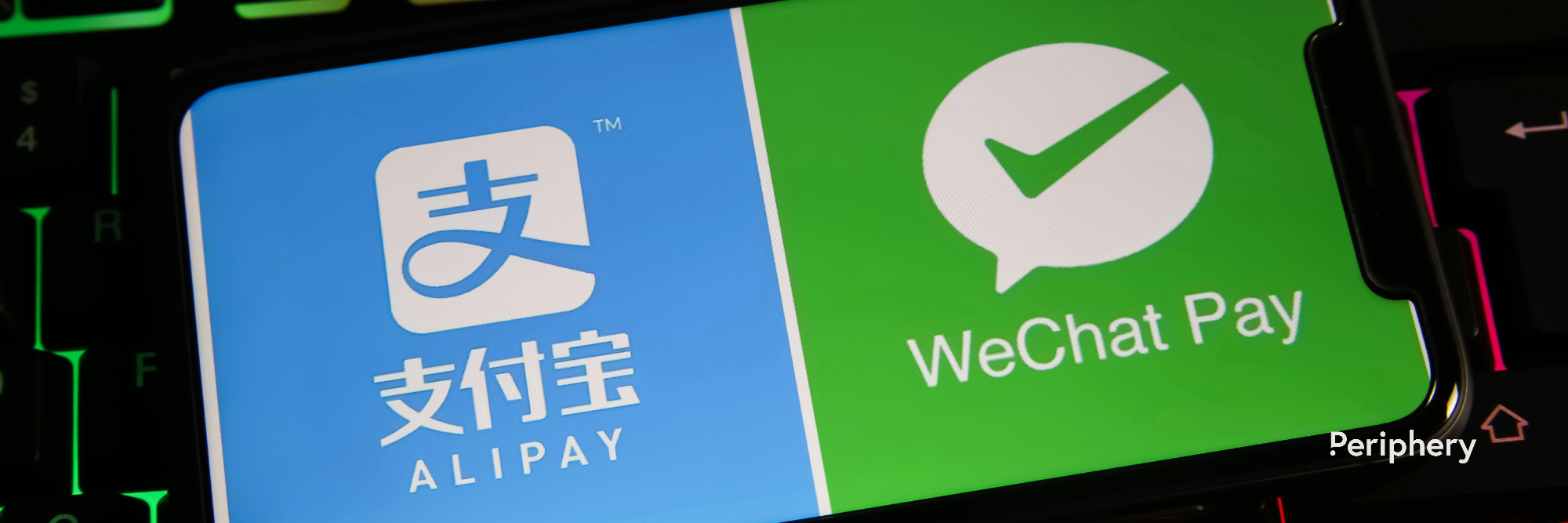WeChat Pay and AliPay have emerged as the international heavy lifters of online third-party payment systems.
These two apps allow its users to integrate all aspects of their day-to-day financial lives in one place. Users can transfer money to friends, shop for groceries, pay their bills, or even invest in the stock market — all without ever having to leave the app.
The apps are also incredibly user-friendly. Transactions are completed with a QR code, and AliPay even offers a sound code substitute for the usual QR code that allows payments to be made without wifi. Together, these apps have revolutionized the way Chinese consumers live their lives —many no longer carry a wallet or cash outside of their phones.
Needless to say, as the two largest Chinese providers of third-party payments, accounting for 90% of the market share, the two companies are fierce competitors. But what makes each of these companies unique? While they do offer comparable services, there are a few notable differences.
Alipay
AliPay was launched in 2004 as a secure transaction service for Taobao, an online marketplace owned by Alibaba Group; until then, widespread public lack of trust in e-commerce led to frequent transaction cancellations. Alipay’s genius was to set up a third-party payment system that holds customer payments and releases them to the buyer only once the customer is satisfied with the product.
Today, Alipay has expanded its original functions to include a full-range of different payment services for businesses and individuals.
WeChat Pay
WeChat Pay was launched in 2013 by WeChat, China’s largest social media app, as a payment method for peer-to-peer (P2P) money transfers and in-app purchases. Essentially, WeChat Pay is “Digital Wallet” that functions as a mini-app within WeChat and links to a user’s active social media account. The Digital Wallet can take money directly from users’ personal bank accounts.
Although it came late to the game, WeChat Pay quickly rose to competitor status, expanding its operations to include everything from bill payments to groceries; by the end of 2017, it had claimed 40% of the market share for online transactions compared to Alipay’s 54% market share.
What this means for Canadian Business
Due to the already saturated domestic market in China, much of their competitive energies are focused on expanding services to Chinese tourists through exclusive partnerships with international brands.
Introducing the mobile-payment infrastructure to support WeChat Pay and Alibaba in Canada offers the potential for Canadian businesses to gain a much larger Chinese tourist market. In a recent survey, 93% of Chinese tourists said they prefer using mobile payments while travelling, and 73% said they would spend more if a business offered a mobile payment option. Offering WeChat Pay and Alipay is an excellent way to show Chinese clientele that you understand their needs and are investing in them.
What’s more, WeChat Pay and Alipay have more benefits than just gaining access to its users. Accepting Alipay and WeChat Pay can save Canadian businesses on international credit card rates. Whereas Visa and Mastercard charge between 2-3% on transactions, these mobile payment apps charge only 1.5%, including the currency conversion.
As of June 2017, Toronto-based OTT Financial Inc. has already begun working with Tencent and Alibaba to introduce their mobile-payment infrastructure in Canada. Chinese tourists will be able to make payments in RMB, which will then be translated to CAD using the spot currency exchange. Periphery Digital is currently partnering with OTT to provide these same services to Vancouver-based Canadian businesses.

If you would like more information on how to set up WeChat Pay and Alipay for your business, please contact Periphery Digital to set up a free consultation.



